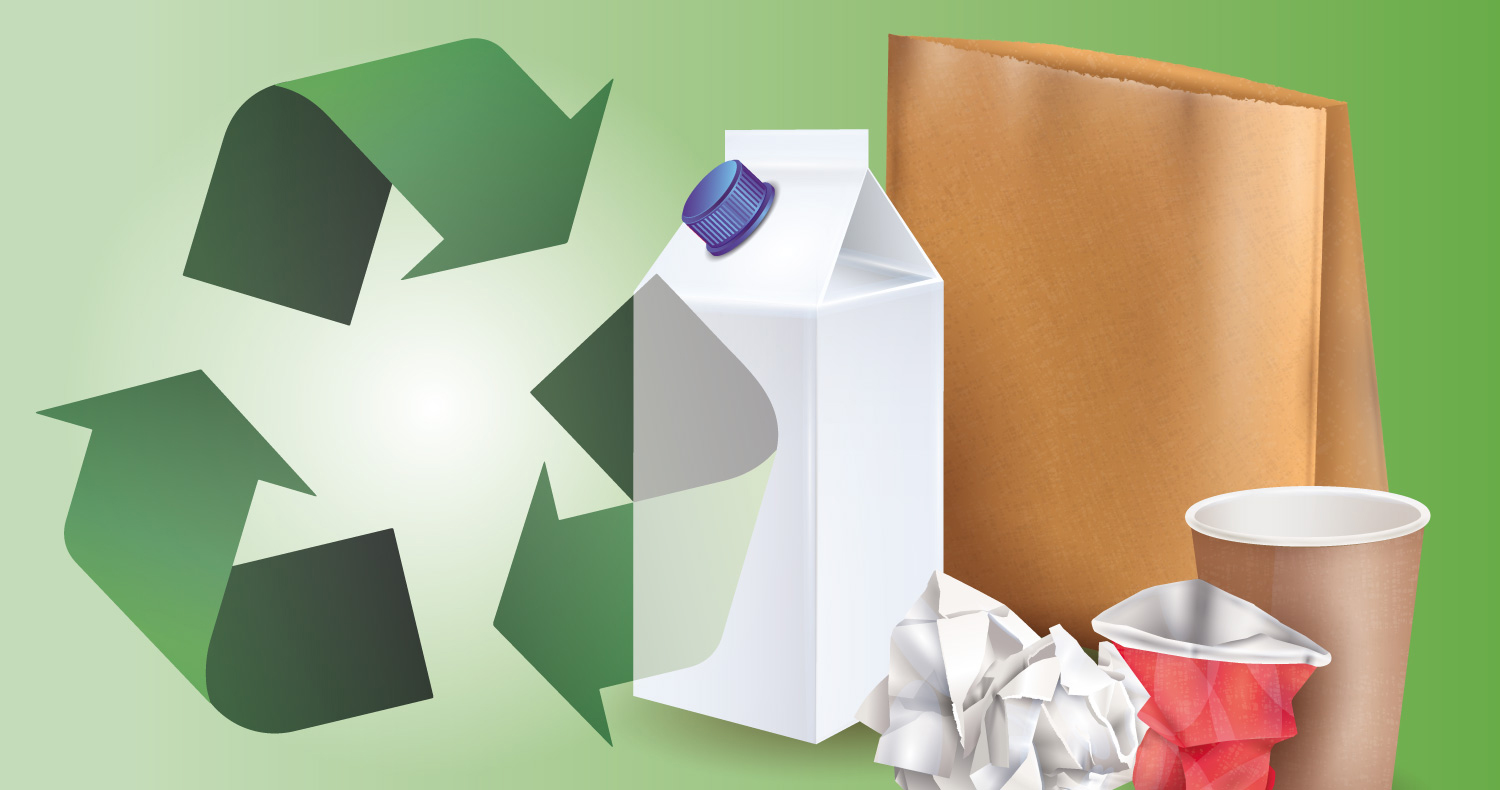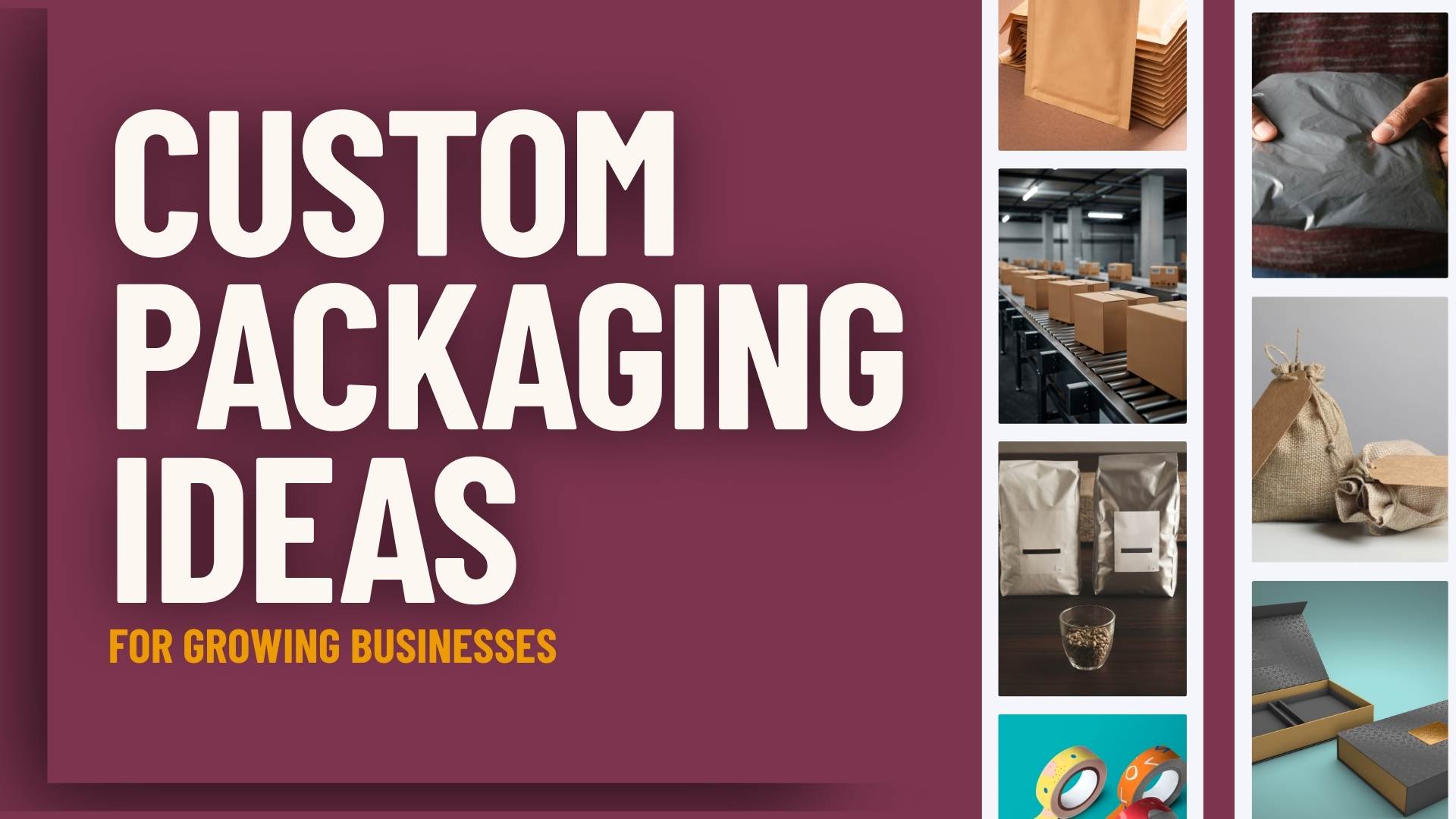As global commerce evolves, the shift towards sustainable packaging has become a cornerstone of responsible business practices. This movement transcends environmental initiatives, intertwining with the core values of modern brands. By embracing sustainable packaging, companies not only contribute to environmental preservation but also align with the growing consumer demand for eco-conscious products.
This commitment to sustainability reduces environmental impact and fosters a positive brand image. Businesses adopting sustainable packaging are not merely following a trend; they are leading the way toward a more sustainable future in the global market. The journey toward sustainable packaging is an ongoing process of innovation and dedication to environmental stewardship.
What is Sustainable Packaging?
At its core, sustainable packaging involves using materials and processes that are environmentally friendly, economically viable, and beneficial for both businesses and society. This concept encompasses practices such as utilizing recyclable packaging, incorporating biodegradable materials, and minimizing the environmental footprint of production processes. The ultimate goal is to achieve a closed-loop system where packaging materials are continuously reused or recycled, reducing waste and reliance on virgin resources.
For a comprehensive understanding of sustainable packaging, refer to this guide by TIPA Corp.
The Pillars of Sustainable Packaging Design
The essence of sustainable packaging design lies in balancing ecological concerns with economic and social needs. It involves a holistic approach that rethinks the entire lifecycle of packaging, from raw material sourcing to disposal. Key pillars include:
- Material Sourcing: Utilising raw materials that are renewable, recycled, or biodegradable reduces the extraction of new resources and promotes a circular economy. Learn more about the benefits of using recycled materials from Recycle Now.
- Energy Efficiency: Prioritizing manufacturing processes that consume less energy and produce fewer emissions. Switching to renewable energy sources, such as solar or wind power, can significantly reduce the carbon footprint of packaging production.
- End-of-Life Considerations: Designing packaging that is easy to recycle or compost ensures a lower environmental impact. Clear labeling and consumer education on proper disposal methods are essential components of this pillar.
- Functionality and Design: Ensuring that sustainable packaging meets the functional requirements of protecting and preserving products. Aesthetically pleasing designs that align with sustainability goals can also attract environmentally conscious consumers.
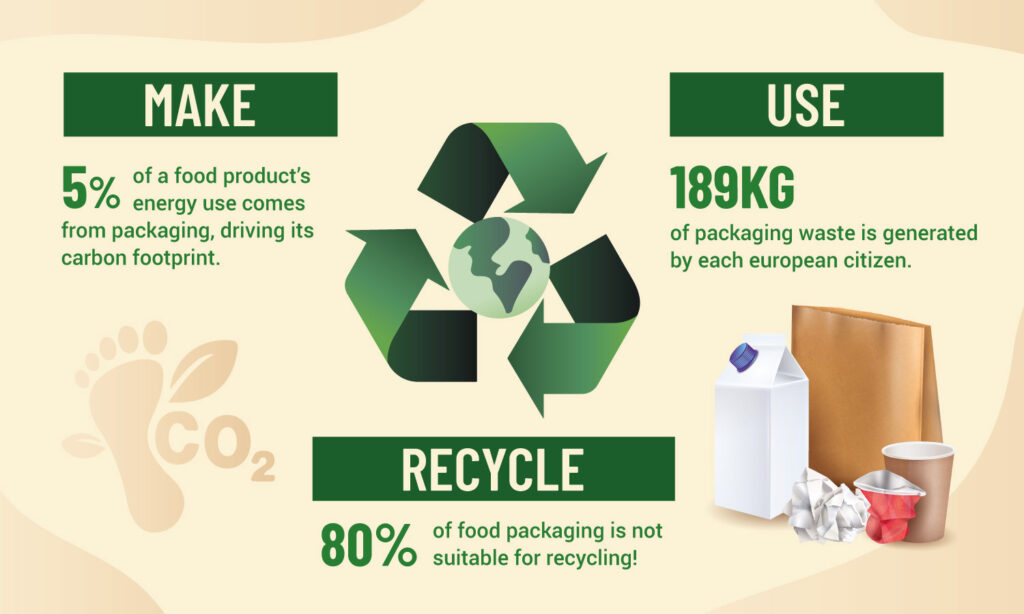
Why Recyclable Packaging is Crucial for Sustainability
Recyclable packaging is fundamental to the sustainable packaging movement, offering an efficient way to reduce environmental impact. By using recyclable materials like paper, cardboard, and certain types of plastic, businesses can conserve raw materials and decrease the amount of waste sent to landfills.
According to Smurfit Kappa’s research on recyclable packaging, up to 90% of packaging waste can be recycled if disposed of correctly. This highlights the importance of consumer education and clear labeling to guide proper recycling practices.
Benefits of Recyclable Packaging:
- Resource Conservation: Reusing materials reduces the demand for virgin resources, conserving raw materials and energy.
- Lower Carbon Footprint: Recycling processes often require less energy than producing new materials, resulting in reduced greenhouse gas emissions.
- Enhanced Brand Image: Consumers increasingly prefer brands that demonstrate environmental responsibility through the use of recyclable packaging.
The Evolution of Sustainable Packaging: Trends and Innovations
The packaging industry has significantly shifted from single-use, non-recyclable materials to embracing a wide range of eco-friendly packaging options. Key trends driving this evolution include:
Biodegradable and Compostable Materials
Biodegradable packaging naturally breaks down over time, reducing environmental impact. The development of compostable packaging has been transformative, offering an alternative to traditional plastics. These materials decompose under specific conditions, converting into nutrient-rich compost that can enhance soil health. For a detailed guide on the benefits and challenges of compostable materials, visit Green Business Benchmark.
Plant-Based Plastics and PLA
Innovations in materials technology have led to the rise of plant-based plastics such as PLA (polylactic acid), derived from renewable sources like corn starch. These alternatives reduce reliance on fossil fuels and offer lower carbon emissions during production. However, they require specific industrial composting facilities for proper breakdown, highlighting the need for infrastructure development.
Flexible Packaging Solutions
Flexible packaging, made from recycled or compostable materials, is gaining popularity for its ability to reduce material usage and transportation costs. These lightweight solutions are ideal for products like snacks and personal care items, where traditional rigid packaging may be excessive.
The Difference Between Recyclable and Compostable Packaging
While both recyclable and compostable packaging aim to minimize waste, they have distinct pathways at the end of their lifecycle:
- Recyclable Materials: Designed to be processed and reused in producing new products. Materials such as cardboard, paper, and some plastics can be recycled multiple times.
- Compostable Materials: These break down into organic matter, enriching the soil and completing the lifecycle naturally. However, not all compostable packaging can decompose in a home compost bin; some require industrial composting facilities.
Understanding these distinctions is crucial for businesses when choosing packaging solutions. For further details, refer to this guide on recycling packaging materials.
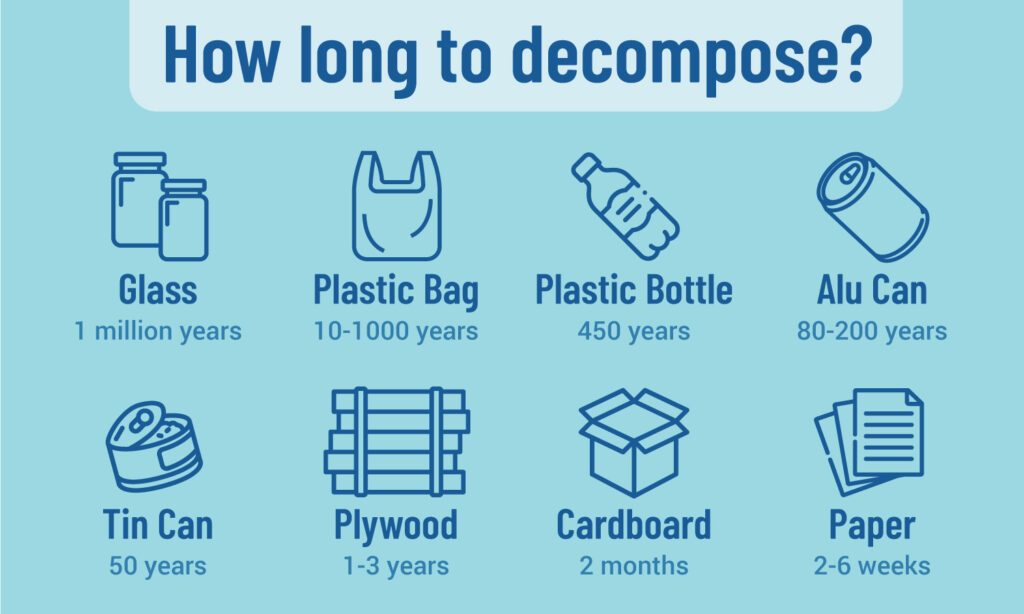
Sector-Specific Innovations in Sustainable Packaging
Food Industry: Leading the Way in Sustainable Practices
The food industry has taken significant strides towards embracing sustainable packaging due to increasing consumer demand and stricter regulatory requirements. New solutions like biodegradable food containers, compostable wrappers, and edible packaging are becoming popular choices. For instance, seaweed-based packaging, which is edible and fully compostable, has shown promise as a viable alternative for single-use plastics, particularly in the snack industry.
One notable case study is Notpla, a UK-based company that has developed an edible, biodegradable packaging made from seaweed and other natural materials. Notpla’s innovation gained significant recognition when they partnered with Just Eat, offering biodegradable sauce sachets as an alternative to single-use plastic. This collaboration not only reduced plastic waste but also showcased the potential of sustainable packaging in the food delivery industry. You can read more about Notpla’s solutions here.
Case Study: Butcher’s Dog Food’s Commitment to Recyclable Packaging
A prime example of a brand dedicated to sustainable packaging is Butcher’s Dog Food. Over the past five years, they have transitioned to fully recyclable packaging, replacing plastic shrink-wrap on their tin multi-packs with recyclable cardboard. This initiative has saved over 856 tonnes of plastic, equivalent to 38.4 million plastic bottles, significantly reducing their environmental footprint.
While Butcher’s Dog Food independently pursued this sustainable path, we have collaborated with them on packaging design projects. Our role focused on enhancing the visual appeal and functionality of their packaging, ensuring it aligns with their brand identity and meets consumer expectations. This partnership underscores our commitment to supporting clients in their sustainability journeys, even when they lead the way in adopting eco-friendly practices.
Discover more about Butcher’s Dog Food’s recyclable packaging efforts here.
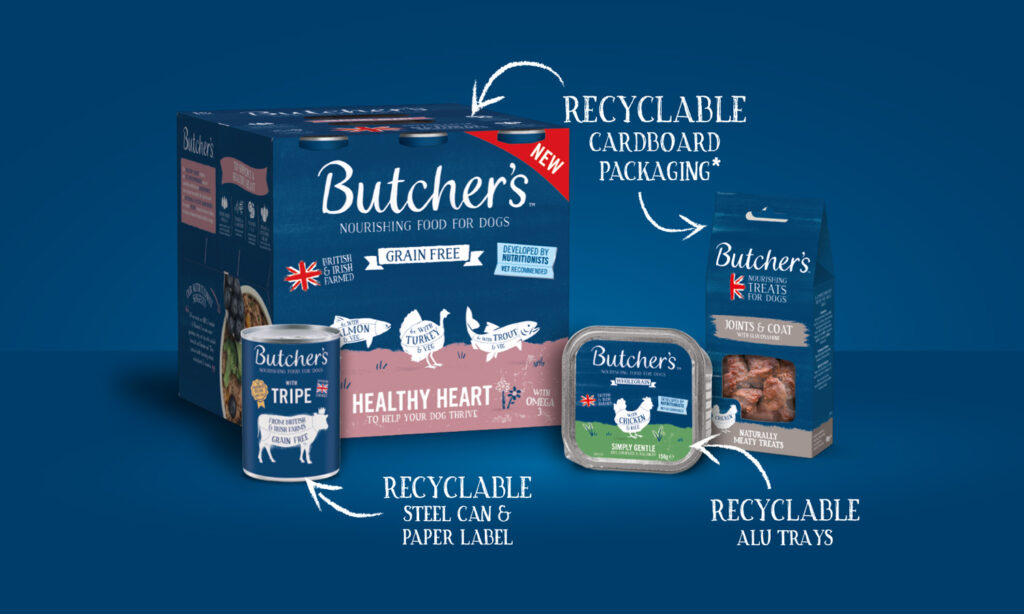
Fashion Industry: Embracing Recyclable and Reusable Materials
The fashion industry has been criticized for its heavy use of plastic packaging, but many brands are now shifting towards sustainable alternatives. Leading fashion companies like Patagonia and Everlane have implemented recycled poly mailers and reusable garment bags as part of their commitment to reducing environmental impact. Patagonia, for example, uses 100% recycled content for its poly bags, cutting down on virgin plastic use and minimizing the brand’s carbon footprint.
Another innovative example is Rapanui, a UK-based sustainable fashion brand. Rapanui uses rip and splash-proof mailer bags made from recycled materials. Stickers are made from recycled materials, and all their packaging is plastic-free. To learn more about their sustainable packaging initiatives, visit Rapanui’s website.
Cannabis Industry: Pioneering Sustainable Solutions
The cannabis industry is rapidly adopting sustainable packaging solutions due to regulatory pressures and consumer preferences for eco-friendly products. Brands are now exploring alternatives such as compostable pouches, recyclable glass jars, and biodegradable tubes. For example, Sana Packaging offers a line of sustainable cannabis packaging made from 100% plant-based hemp plastic, which is biodegradable and recyclable. Sana Packaging’s commitment to sustainability aligns with the growing trend of environmentally conscious consumer behaviour within the cannabis sector. More about their products can be found here.
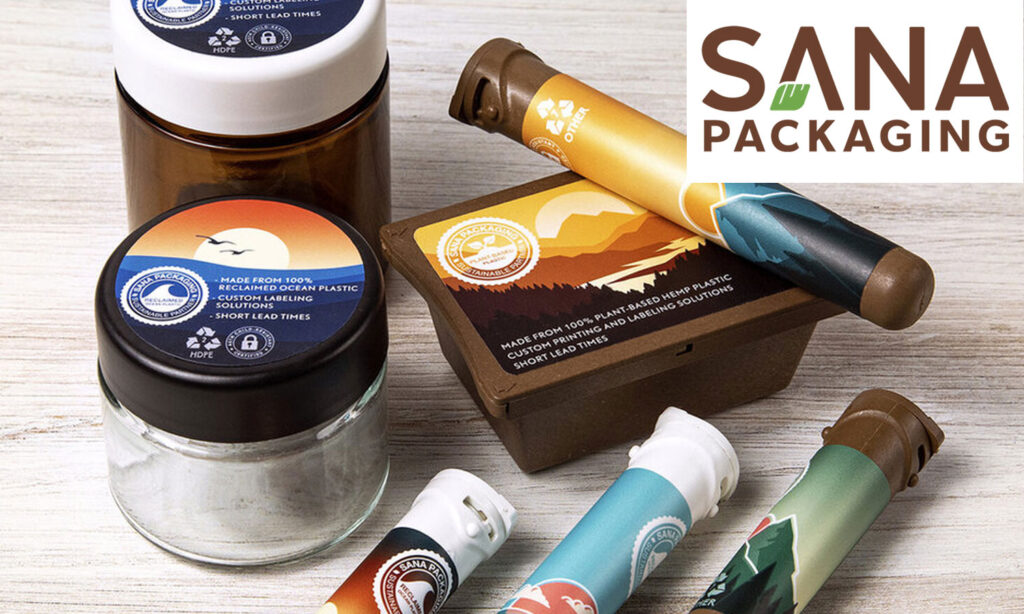
Good Vibes Tea: Embracing Reusability with Refillable Packaging
Following the trend of reducing single-use packaging, Good Vibes Tea has taken a unique approach to sustainability by focusing on reusable packaging solutions. Instead of relying on traditional recyclable options, Good Vibes Tea offers its products in sleek, reusable metal tins. This strategy aligns with the brand’s commitment to minimizing waste and promoting a circular economy.
Customers are encouraged to keep their metal tins and refill them with tea from small, compostable pouches delivered through a convenient subscription service. This innovative model not only reduces the need for new packaging materials but also fosters a deeper connection between the brand and its eco-conscious consumers. By offering refill options, Good Vibes Tea helps reduce waste while providing a sustainable, long-term solution for tea storage.
For more details on their sustainable packaging initiatives, visit Good Vibes Tea.
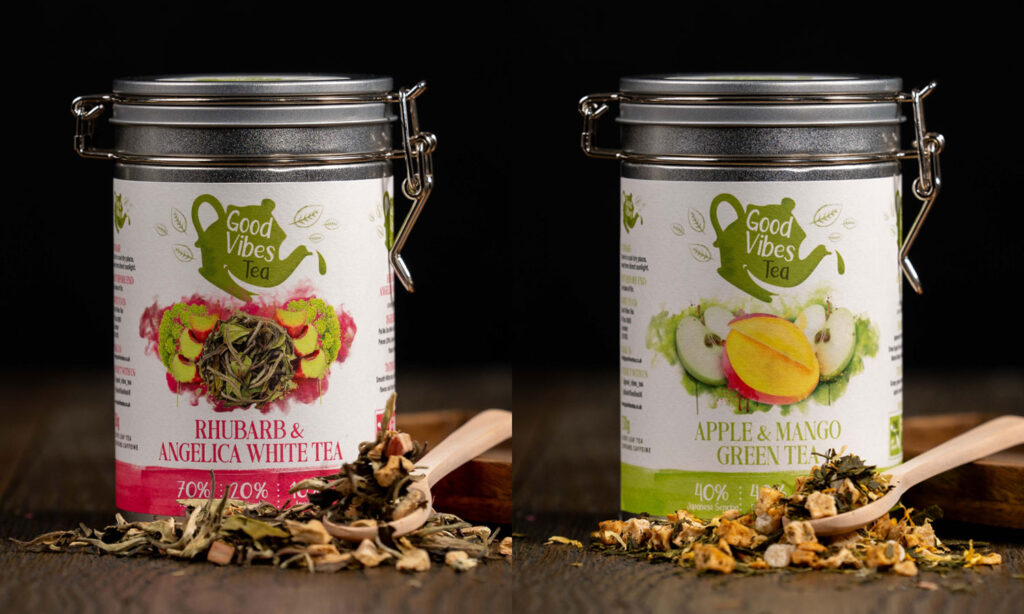
Lifecycle Assessment: Evaluating the Environmental Impact of Packaging
Conducting a lifecycle assessment (LCA) is an essential step in determining the environmental impact of packaging materials. An LCA evaluates the environmental footprint of a product from raw material extraction through manufacturing, transportation, usage, and disposal. This comprehensive analysis helps businesses identify areas where they can reduce their carbon footprint, such as choosing materials with a lower impact or optimizing the design for recyclability.
The importance of LCAs has been highlighted by the Ellen MacArthur Foundation, which advocates for a circular economy approach in packaging. By incorporating LCA data, companies can make informed decisions that align with their sustainability goals and reduce waste. For more information on conducting lifecycle assessments, refer to the EllenMacArthur Foundation’s resources.
Case Study: Unilever’s Sustainable Packaging Commitment
One of the most significant corporate commitments to sustainable packaging comes from Unilever, a global consumer goods company. Unilever has pledged to make 100% of its plastic packaging recyclable, reusable, or compostable by 2025. The company has already made substantial progress by introducing recycled plastic bottles, paper-based packaging, and compostable ice cream tubs for its brands like Ben & Jerry’s.
Unilever’s strategy includes reducing the amount of virgin plastic used in packaging, increasing the use of recycled materials, and investing in innovative packaging solutions. Their efforts have resulted in a significant reduction of their plastic footprint, and they continue to explore new materials that are both eco-friendly and functional. Learn more about Unilever’s sustainability initiatives here.
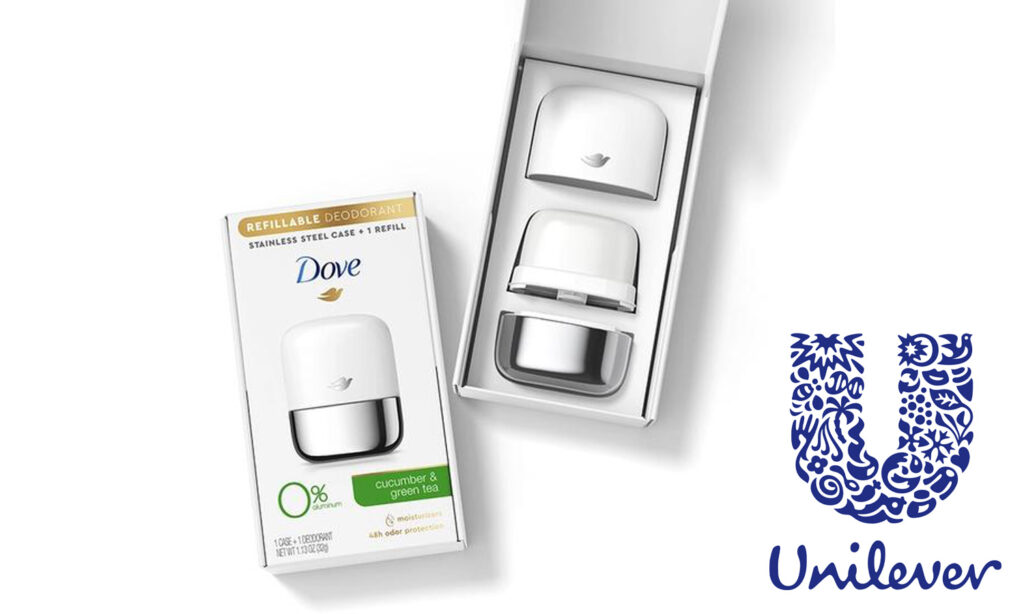
The Future of Sustainable Packaging: Emerging Trends
The future of sustainable packaging is shaped by advancements in materials science and the growing consumer demand for eco-friendly products. Here are some emerging trends to watch:
- Smart Packaging Technology: Integrating sensors and RFID tags in packaging to monitor freshness, track recyclability, and enhance consumer engagement. Smart packaging can provide valuable data to support sustainable practices by reducing waste and optimizing supply chains.
- Reusable Packaging Systems: Brands like Loop are pioneering reusable packaging solutions, where consumers can return empty containers for cleaning and reuse. This system promotes a circular economy and significantly reduces single-use packaging waste.
- Minimalist Packaging Design: Companies are increasingly adopting a minimalist approach, using less material without compromising the product’s protection. Lightweighting packaging not only reduces material usage but also lowers transportation emissions, contributing to a smaller carbon footprint.
- Bioplastic Innovations: The development of new bioplastics, such as PHA (polyhydroxyalkanoate), offers a promising alternative to traditional petroleum-based plastics. PHA is fully biodegradable and can break down in both marine and soil environments, making it an excellent choice for reducing plastic pollution.
Navigating the Transition to Sustainable Packaging with Goulding Media
At Goulding Media, we recognise the importance of transitioning to sustainable packaging solutions that align with both business goals and consumer expectations. Our approach includes:
- Custom Design and Consultation: We offer bespoke sustainable packaging designs tailored to meet the specific needs of your product while ensuring minimal environmental impact.
- Material Sourcing: We work with trusted suppliers to source recyclable, compostable, and biodegradable materials, ensuring your packaging meets the highest sustainability standards.
- Lifecycle Analysis and Optimization: By conducting a comprehensive lifecycle assessment, we help identify areas for improvement and implement strategies to reduce your packaging’s carbon footprint.
We pride ourselves on delivering innovative and practical packaging solutions that not only protect your products but also reflect your brand’s commitment to sustainability.
Conclusion: A Call to Embrace Sustainable Packaging
The shift towards sustainable packaging is driven by a combination of consumer demand, regulatory changes, and the urgent need to address environmental issues. Businesses that adopt eco-friendly packaging solutions position themselves as leaders in a responsible and sustainable future. The benefits of sustainable packaging extend beyond reducing waste; they enhance brand loyalty, meet regulatory requirements, and contribute to a healthier planet.
Call to Action: Is your business ready to make the switch to sustainable packaging? Contact Goulding Media today to explore our range of environmentally friendly packaging solutions and start your journey towards a greener future.

